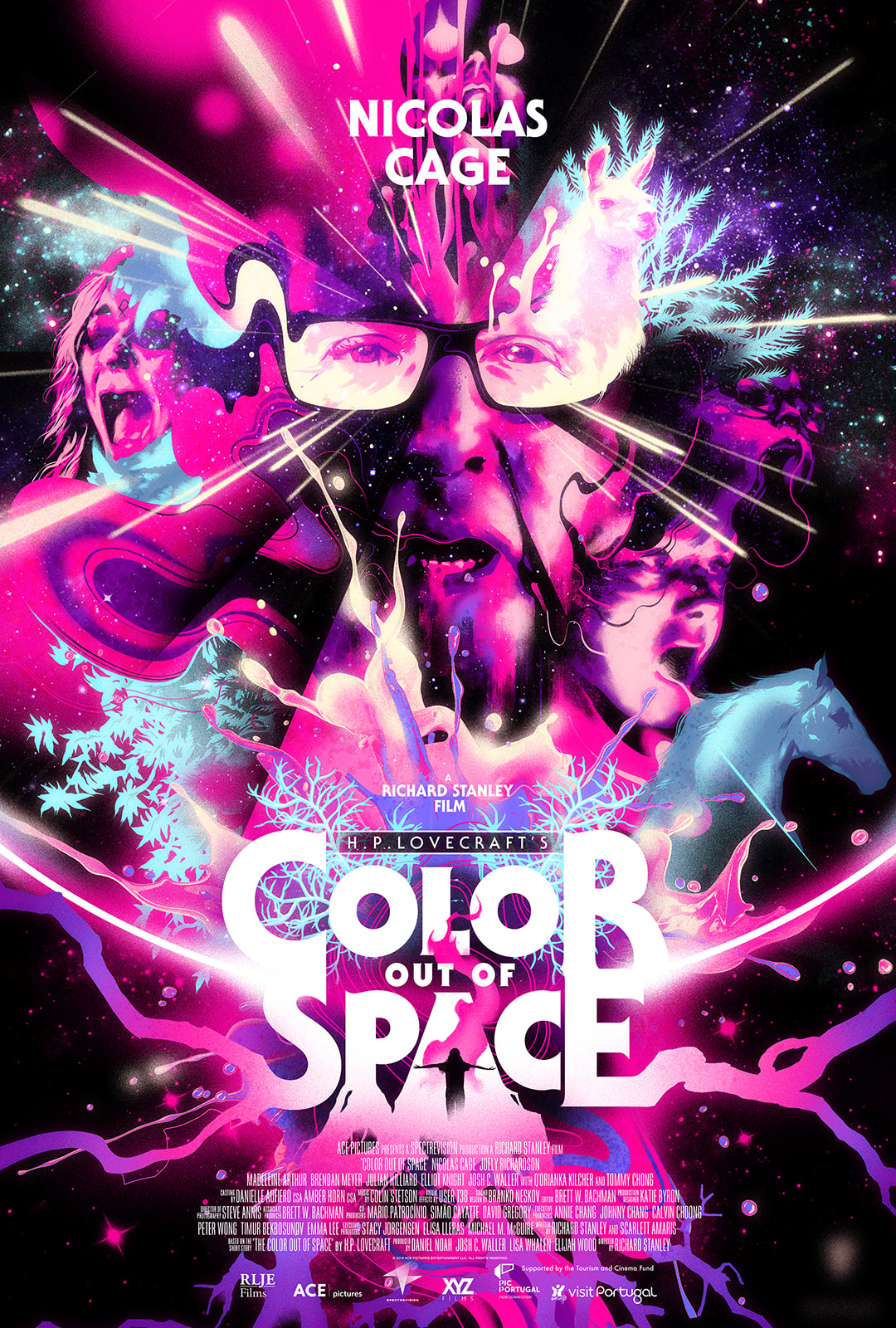|
by Lucas Fink I entered the theatre never having seen Nicholas Cage milk alpacas. I exited the theatre having seen Nicholas Cage milk alpacas.
Color out of Space is a 2020 film directed by Richard Stanley, written by Scarlett Amaris and Stanley, and shot by Steve Annis. The film is an adaptation of H.P. Lovecraft’s short story of the same name. Like Franz Kafka, Bertolt Brecht, and the like, Lovecraft spawned a new genre in fiction, and hence, a new word English teachers everywhere now use to flex their cultural literacy: Lovecraftian. If a given work is Lovecraftian, it tends to feature immense, unknowable forces that ravage the delicate psyches of the humans who encounter them. The essence of Lovecraftian horror is the irony inherent in our futile attempts to apprehend and understand that which evades comprehension. In the face of our failure to know and control, we feel sad and small, dwarfed by an infinite and uncaring cosmos. Adapting Lovecraft is pretty difficult because a book, a medium with which the reader engages on a more cerebral level, and hence is afforded a greater ambiguity, can very effectively suggest the indescribable without ever actually having to describe it explicitly. Film, being an audiovisual medium, cannot offload most of the work on the viewer’s imagination like books can; film must show. How does one show the unshowable, know the unknowable? You give Nicholas Cage some alpacas, hire a good cinematographer, throw in a heaping helping of absurdist comedy, and get really weird. Thankfully, Richard Stanley does all of these things. As a result of Stanley doing all those things, the final product is genuinely hilarious, thoroughly unnerving, grotesque, quite beautiful, and really fun to watch. It is very clear that the cast, all of whom do a bang-up job, had a clear understanding of Stanley’s tongue-in-cheek, campy vision; they still manage, though, to project an air of emotional authenticity. Allowing just enough self-awareness to poke through during the more over-the-top moments of horrific hilarity while still maintaining a bedrock of believable pathos is difficult; Cage and company pull it off impressively. Is this film more than just a technicolor gorefest? Yes. Firstly, the film relies on more than just gore for its scares. Secondly, any film that innovatively and respectfully adapts a Lovecraft work must have something on its mind. The film scathingly depicts the mayor of this fictional Maine town and the bureaucratic structures of which she is a representative as ineffectual and disconnected, while casting in a much more sympathetic light the young hydrologist surveying the land around Cage’s property who serves as the audience stand-in and as the hyper-competent proletarian dude not afraid to get down and dirty and wise enough to not drink the alpaca milk. These two figures, standing in contest with one another, engage with the asteroid and the ensuing madness in different and important ways. The mayor employs a news team to milk the crash site for any spectacle to be had and then neglects it for the rest of the film (and, mild spoilers, eventually covers it all up, literally and figuratively). Our hydrologist hero, on the other hand, tries to understand and learns quickly that this color from outer space, and the reality we inhabit, cannot be understood. Here, we have the root source of the film’s horror: humans are in no way of any cosmic importance and are the mere playthings of chaotic, arbitrary forces that we will never come to control or even comprehend. What are we to do when mocked and belittled by the cosmos like this? The film presents three options: we can cry, go insane, or laugh. I choose the last option.
0 Comments
Leave a Reply. |
Archives
March 2024
Writers
All
|
